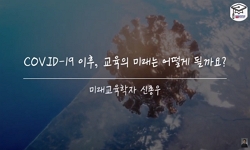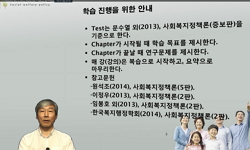본 연구는 COVID-19 팬데믹 단계별로 에너지 빈곤 가구 수의 변화 등을 파악하고, 지니계수와 지니계수 요인분해법을 활용하여 소득 원천 및 에너지 구입비의 불평등 기여도를 에너지 빈곤 가...
http://chineseinput.net/에서 pinyin(병음)방식으로 중국어를 변환할 수 있습니다.
변환된 중국어를 복사하여 사용하시면 됩니다.
- 中文 을 입력하시려면 zhongwen을 입력하시고 space를누르시면됩니다.
- 北京 을 입력하시려면 beijing을 입력하시고 space를 누르시면 됩니다.
https://www.riss.kr/link?id=A109085965
- 저자
- 발행기관
- 학술지명
- 권호사항
-
발행연도
2024
-
작성언어
Korean
- 주제어
-
KDC
325
-
등재정보
KCI등재
-
자료형태
학술저널
-
수록면
161-178(18쪽)
- DOI식별코드
- 제공처
-
0
상세조회 -
0
다운로드
부가정보
국문 초록 (Abstract)
본 연구는 COVID-19 팬데믹 단계별로 에너지 빈곤 가구 수의 변화 등을 파악하고, 지니계수와 지니계수 요인분해법을 활용하여 소득 원천 및 에너지 구입비의 불평등 기여도를 에너지 빈곤 가구와 일반가구를 구분하여 비교 분석하였다. 분석결과 시장소득 증가율은 COVID-19 발생 한 직후 1년간인 초기발생기에 가장 낮았으며, 시장소득 기준으로 에너지 빈곤가구수는 팬데믹 이전보다 0.5% 증가하였다. 다만 사회수혜금 등 공적이전소득의 증가로 가처분소득을 기준으 로 에너지 빈곤가구는 0.27% 감소하였다. 가처분소득의 소득원천과 에너지 구입비의 지니계수 요인분해 결과 일반가구는 근로소득의 비중이 매우 높고, 에너지 빈곤가구는 공적이전소득과 근로소득 및 사업소득의 비중이 높았다. 일반가구의 상대적 불평등 기여도는 초기발생기에 근로소득이 가장 높았고, 에너지 빈곤가구에서는 초기발생기에 근로소득이 상대적 불평등 기여도가 가장 낮았으며, 공적이전소득의 상대적 불평등도가 가장 높았다. 에너지 구입비의 상대적 기여도는 일반가구에 비해 에너지빈곤가구가 약3배 높은 결과를 보였다.
다국어 초록 (Multilingual Abstract)
The study identifies the changes in the number of energy-poverty households (HH) during the COVID-19 pandemic, and compares and analyzes the inequality contribution of income sources and energy purchase costs (EPC), using Gini coefficient and Gini dec...
The study identifies the changes in the number of energy-poverty households (HH) during the COVID-19 pandemic, and compares and analyzes the inequality contribution of income sources and energy purchase costs (EPC), using Gini coefficient and Gini decomposition. As a result, the market income growth rate was the lowest in the early stage of the outbreak, and the number of energy-poverty HH based on market income increased by 0.5% compared to before the pandemic. However, due to the increase in transfer income, the number of energy-poverty HH decreased by 0.27% based on disposable income. On Gini decomposition of disposable income sources and EPC, general HH had a very high proportion of earned income, and energy-poverty HH had a high proportion of transfer income, earned income, and business income. The relative inequality contribution of general HH was highest in earned income, and for energy-poverty HH, the relative inequality contribution of earned income was lowest, and the relative inequality of transfer income was the highest during the early outbreak. The relative contribution of EPC was around three times higher for energy-poor HH than general HH.
목차 (Table of Contents)
- 요약
- Ⅰ. 서론
- Ⅱ. 이론적 배경
- 2.1 선행연구
- 2.2 COVID-19 팬데믹 기간 구분
- 요약
- Ⅰ. 서론
- Ⅱ. 이론적 배경
- 2.1 선행연구
- 2.2 COVID-19 팬데믹 기간 구분
- 2.3 COVID-19 팬데믹 기간별 가구소득
- 2.4 COVID-19 팬데믹 단계별 소비자물가지수
- Ⅲ. 연구방법
- 3.1 분석대상 및 방법
- 3.2 에너지 빈곤 가구 지표
- 3.3 지니계수(Gini coefficient) 분석
- 3.4 지니계수 요인분해 분석
- Ⅳ. 분석 결과
- 4.1 COVID-19 팬데믹 기간별 가처분소득 증감률
- 4.2 COVID-19 팬데믹 기간별 에너지 빈곤가구수
- 4.3 소득 원천별 평균소득 결과
- 4.4 지니계수요인분해 결과
- Ⅴ. 결론 및 정책적 함의
- 참고문헌
- Abstract
동일학술지(권/호) 다른 논문
-
- 한국전문경영인학회
- Cha, Heungsok
- 2024
- KCI등재
-
생계형 개인 서비스 산업 경영자의 디지털전환 영향 요인 연구
- 한국전문경영인학회
- 홍정훈
- 2024
- KCI등재
-
- 한국전문경영인학회
- 조서일
- 2024
- KCI등재
-
중소기업 전문경영인을 위한 마케팅 자동화 인공지능 솔루션의 활용연구
- 한국전문경영인학회
- 유청범
- 2024
- KCI등재





 KCI
KCI eArticle
eArticle




